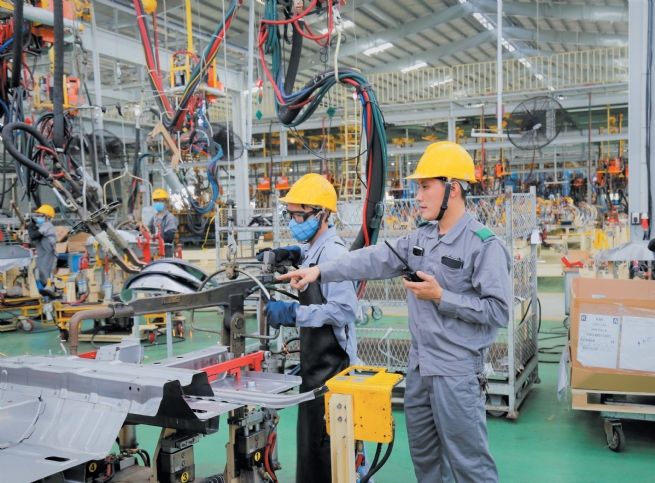9:17:10 AM | 7/30/2024
The Asian Development Bank (ADB) maintained its growth forecasts for Vietnam at 6.0% and 6.2% in 2024 and 2025, respectively, on the back of strong growth in the first half of 2024. However, the trade-related manufacturing - one of the main drivers of recovery - is expected to slow down in the coming time while domestic demand will remain subdued. Inflation is projected to stabilize at 4% in 2024 and 2025.

Vietnam's growth in 2024 hinges on strong export-led manufacturing, steady FDI and remittance inflows, alongside efforts to revive services, stabilize agricultural output, and bolster domestic consumption
Mr. Shantanu Chakraborty, ADB Country Director for Vietnam, “Vietnam's economy was quite impressive in the first half of 2024, with GDP growth at 6.4% compared to the same period of last year. This was mainly driven by a strong trade recovery, where exports grew by 14.5% and imports by 17% year on year. However, the domestic segment remained sluggish, with final consumption growing by only 5.8%.
“Vietnam can maintain its growth momentum in 2024 through sustained trade recovery in export-led manufacturing, positive inflows of FDI and remittances, while making more efforts to restore service growth, stable agriculture production and domestic consumption recovery”, he said.
Although the economy is expected to post solid growth this year and grow at a slightly higher pace next year, Vietnam still faces several external downside risks that could slow down its growth momentum, including softened global demand caused by slow economic recovery among its trading partners and continued geopolitical tensions, he added. These two factors will slow down the recovery of Vietnam's export-led growth.
In addition, the lower pace of normalization of interest rates in the United States and other advanced economies will continue to put pressure on the exchange rate. Growth in 2024 also depends on effective enforcement of the government’s fiscal measures and public investment.
Moreover, extreme weather phenomena (El Nino causes heavy rains and floods) will affect agriculture and crops.
Shantanu Chakraborty said, the relative slowdown in growth in recent years has exposed the risks of structural fragilities in the Vietnamese economy, such as the reliance on FDI-led export manufacturing, show disbursement of public investment, and overreliance on bank credit among others. If these risks are addressed in a timely manner, Vietnam may achieve stronger growth. Therefore, the Government needs to continue to reform more strongly in the short and long terms to foster growth in the next period. Vietnam's economic outlook is optimistic but necessarily prudent.
According to the Asian Development Outlook (ADO) report, ADB has also slightly raised its economic growth forecast for developing Asia and the Pacific this year to 5% from a previous projection of 4.9%, as rising regional exports complement resilient domestic demand. The growth outlook for next year is maintained at 4.9%. Inflation is forecast to ease gradually to 2.9% this year amid lower global food prices and the lingering impact of higher interest rates.
After a post-pandemic recovery that was driven mainly by domestic demand, exports are rebounding strongly and helping propel the region’s economic growth. Strong global demand for electronics, particularly semiconductors used for high-technology and artificial intelligence applications, is boosting exports from several Asian economies.
Mr. Alberk Park, ADB Chief Economist, said: "Most of Asia and the Pacific is seeing faster economic growth compared with the second half of last year. The region’s fundamentals remain strong, but policymakers still need to pay attention to a number of risks that could affect the outlook, from uncertainty related to election outcomes in major economies to interest rate decisions and geopolitical tensions.”
By Quynh Chi, Vietnam Business Forum